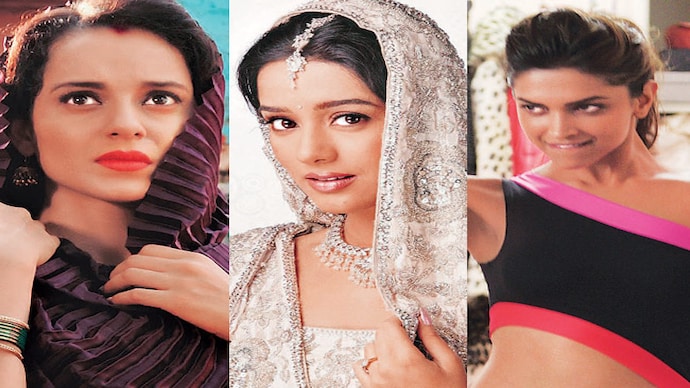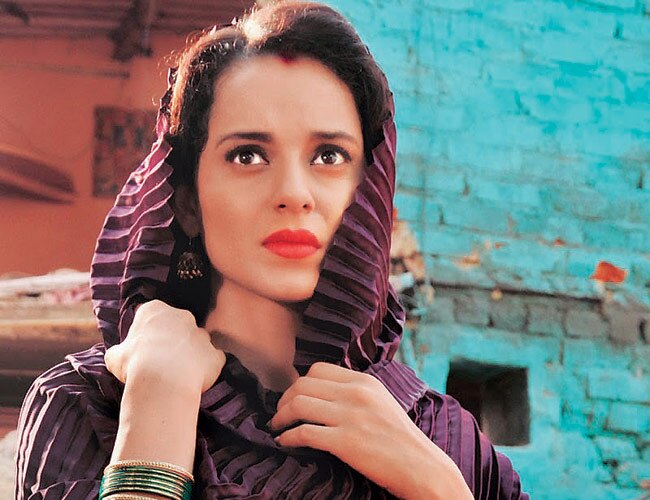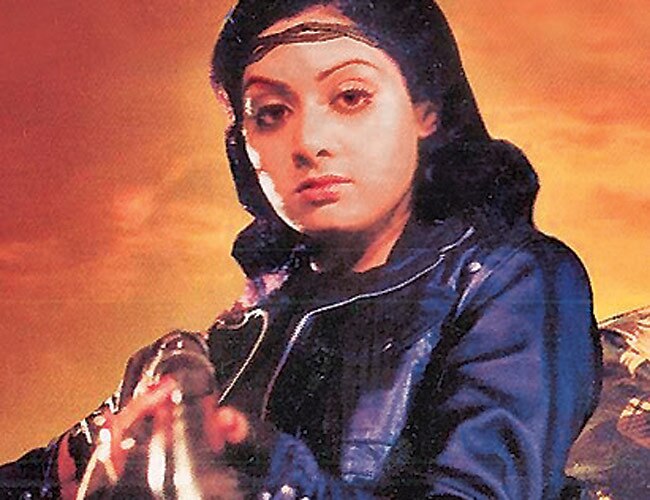Depicting women in Bollywood: The mould never changes
Trends in Bollywood change but the stock stereotypes depicting women remain the same.

Bollywood films have largely been about stereotypes. Characters, situations and plots have largely been driven by stereotypical ideologies. Much has been made of research facts released by the Geena Davis Institute on Women in Media supported by UN Women and The Rockfeller Foundation, which claimed Indian films top the list in objectifying women on screen. A sample survey showed Indian films have largely depicted the women in sexualised roles. Objectifying women on screen has been a prominent issue that Indian films have been battling with. Besides, our films have been infamous for depicting female characters in set stereotypical frames.

"The audience expects certain stereotypes and over the years it has become an easy option for filmmakers to establish characters. In a typical film, the filmmaker relies on outfit, mannerism and dialogues to characterise and distinguish a good mother from a bad mother," said trade analyst Komal Nahta, who stresses on the fact that it is the most convenient way for a filmmaker to associate something with a character.
Although Indian films are trying to break stereotypes and opting for innovative characters, the process has largely been slow. Despite a spate of several prominent female-oriented films offering meaty roles to heroines and several promising women filmmakers creating offbeat cinema in recent times, our films have rarely got rid of stereotypes.
"The line between the heroine and the vamp has blurred," said ad filmmaker Prahlad Kakkar. "This is a perfect example of diminishing stereotypes. It's a welcome sign that the films are trying to outgrow the set pattern of demarcating the characters. Films such as Mary Kom, Kahaani or Haider - where Tabu is depicted as an atypical filmi mother - have been appreciated by the audience. This is a clear proof that the audience wants our films to break away from stereotypes," said Kakkar.
Lack of scriptwriters to create innovative characters is attributed to be a big impediment. "The industry which is largely business-driven refuses to take risk by bringing in new characters or write ingenious scripts for actresses," added Kakkar. Over the years, Bollywood buffs have loved stereotypical female characters.
Abla naari

In the 70s, every time a woman on screen pleaded "bhagwaan ke liye mujhe chhod do" to a menacing villain with ignoble intent, the front stalls would mostly burst into whistles. The stock situation had become perverted titillation of sorts.
The phenomenon summed up the mindset of a segment of the audience who loved to see women subjugated on screen. Elsewhere, Meena Kumari's portrayal of sorrowful and melodramatic characters in several films earned her the sobriquet of Tragedy Queen.
The hero's sister, ironically, remained the perfect definition of abla naari. The sister's rape enraged the heroes such as Amitabh Bachchan in Aakhree Rasta, Raj Babbar in Aaj Ki Awaz and Sunil Shetty in Aaghaz, unleashing violent vendetta.
Sanskari ladki

The Indian audience has secretly fantasised the one and only ideal women - the traditional girl. In the films of the '60s and the '70s, she was often typified as a girl who would wake up early, sing bhajans, worship her husband and cook for the family. If she ever worked (which was rare; necessary only if she came from a very poor family), she would walk to office. The era of '80s saw a spate of family films that had almost every heroine from Hema Malini and Rekha to Moushumi Chatterjee and Vidya Sinha try out the formula, either as bahu, bhabhi or single mother.
The good girl is the one whom the hero ultimately picks to take home. A foreign-educated Salman Khan in Maine Pyar Kiya or Hum Saath Saath Hain prefers the coy conservatively dressed girl over the one with a modern mindset (invariably projected as a vamp).
In Vivah, Shahid Kapoor repeats the template while wooing the very traditional Amrita Rao (in pic). In Cocktail, Saif Ali Khan picks the super-sanskari Meera, played by Diana Penty, after gallivanting with Deepika Padukone's free-spirited Veronica all along. Worse, when Veronica decides to try wooing the hero one final time in the end, she turns demure in salwarkameez, giving up her micromini image in an instant.
The Amitabh Bachchan film Kaalia presented Bollywood's obsession for sanskari women in a lighter vein when Parveen Babi, playing a pickpocket, tries impressing the hero's conservative bhabhi with a saree-clad makeover.
The mother

"Mere paas maa hai," the legendary dialogue from Deewar sums up the obsession for the mother in Indian films. Clad in a white saree, the mother prototypes projected by Nirupa Roy and Nalini Jaywant topped the league of onscreen mothers. Forever ready with "apne haatho se banaya khaana", they would cough endlessly. The conflict between the 'good mother' and 'bad mother' has continued on screen.
Preity Zinta as the slogging fashion editor unable to give time to her family in Kabhi Alvida Naa Kehna or Manisha Koirala as an ambitious starlet abandoning her child in Akele Hum Akele Tum questioned the maternal stereotype.
Rather, the audience loved Raakhee Gulzar playing a demented mother longing for the rebirth of her dead sons, bawling "mere Karan Arjun aayenge".
We seriously hope differently imagined moms like Zohra Sehgal in Cheeni Kum or Dolly Ahluwalia in Vicky Donor become more commonplace.
The bad girl

The bad girl in Bollywood is one who defies the rules of society. Just as Indian society has set rules to define a fallen woman, our films too follow set rules for that stereotype.
Asha Parekh as the girl who elopes with her lover in Kati Patang was a prominent example of an on-screen fallen woman in the Rajesh Khanna era. Lately, though, the bad girl is not necessarily a fallen woman. Bipasha Basu in Jism, Deepika Padukone in Cocktail or a Priyanka Chopra in Saat Khoon Maaf have been prominent examples of this.
Vamp/Item girl

When Mona Darling displayed her long legs or lit the villain's cigar, the audience celebrated the arrival of a decorated vamp on the screen. In the '60s and the '70s, a woman wearing sleeveless blouse and sipping alcohol on screen blatantly symbolised being bad. Nadira, playing the scheming temptress in many a film including Shree 420, was the quintessential vamp of the era.
The obnoxious golden wigs, dripping red lips, skimpy gowns with long slits and suggestive mannerism defined the vamp in the '70s and the '80s. Padma Khanna's Husn ke lakho rang or Helen's Mehbooba mehbooba were songs that set the trend highlighting the stereotype.
A trademark that typified the vamp was she would get to do a cabaret dance. Since the 2000s, the cabaret dance has morphed into item numbers. While specialised dancers such as Rakhi Sawant and Kashmira Shah represented firstgeneration item girls, the leading actresses of our times have taken over the job lately.
As far as female villainy goes, Kajol in Gupt, Priyanka Chopra in Aitraaz and Kareena Kapoor in Fida have been some interesting roles in recent times.
The scorned woman

'Badle ki aag' has been a favourite emotion for our filmmakers. Scorned women took the centrestage in the '80s, when Rekha, Sridevi and Dimple Kapadia played fiery women out to avenge murder or rape. Rekha's Khoon Bhari Maang and Phool Bane Angarey, Sridevi's Sherni or Dimple's Zakhmi Aurat, replete with bombastic dialogue, characterised the adage: Hell hath no fury like a woman scorned. Cut to the films of today, the done to death formula has remained restricted to B-grade fare such as Hate Story 2, while a rare film such as Sujoy Ghosh's Kahaani shows the heroine get even with a terrorist, keeping stereotypes at bay.